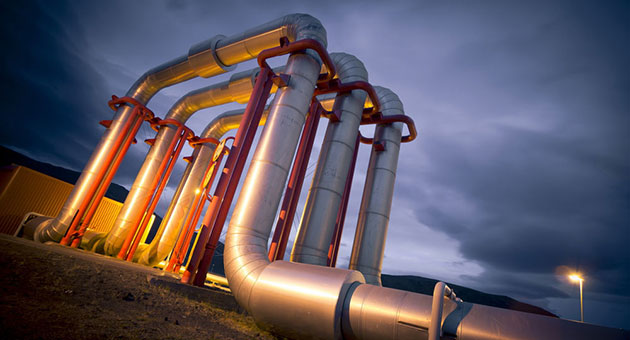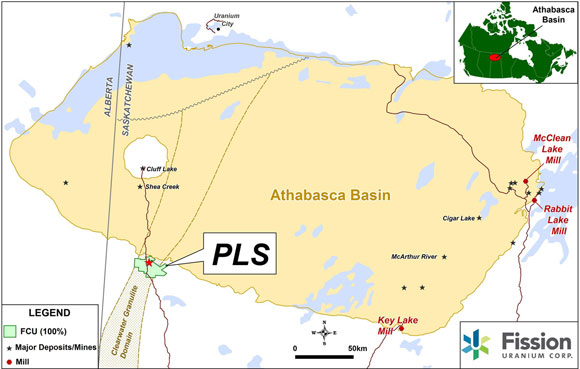TICKERS: ENB, EVEP, LINE, PAA
MVP Energy MLPs: John Edwards
Interview
Source: Brian Sylvester of The Energy Report (1/10/12)
 John Edwards, first vice president covering energy infrastructure master limited partnerships for Morgan Keegan, is bullish for 2012 and well beyond. In this exclusive interview with The Energy Report, Edwards highlights how this sector pairs a low-volatility asset class with stable, secure distributions—a rare combination in today's markets.
John Edwards, first vice president covering energy infrastructure master limited partnerships for Morgan Keegan, is bullish for 2012 and well beyond. In this exclusive interview with The Energy Report, Edwards highlights how this sector pairs a low-volatility asset class with stable, secure distributions—a rare combination in today's markets.
The Energy Report: A year ago, you forecast average returns of 10% with the yield spread between master limited partnerships (MLPs) and 10-year U.S. treasuries at 290 basis points. How accurate did your forecast turn out to be?
John Edwards: It turned out fairly well. The actual performance for MLPs beat our original expectations by about 390 basis points. On the last trading day of 2011, we were looking at 13.9% total return.
We targeted yields on the sector between 6% and 6.5% and it ended near 6.1% at the lower end of our targeted range.
TER: What is the current yield spread?
JE: The current yield spread is approximately 4.2%, 420 basis points.
TER: Do you believe MLPs are valued fairly right now?
JE: We think fair value in the year ahead should be in the 5.75% to 6.25% range, which is where we are. In that regard, MLPs are fairly valued.
If you look at it from the standpoint of spreads against U.S. 10-year Treasuries, you can make the case that MLPs are undervalued. Over the last decade, the average yield spread between MLPs and the U.S. 10-year has been about 324 basis points. Over the last five years, it has been 385. Obviously, that was skewed by the financial crises in 2008 and 2009. The most commonly occurring yield spread is in the range of 200–250 basis points.
We prefer to be a little conservative. With respect to valuation, MLPs have averaged a 7% yield over the last 10 years, and about 7.4% over the last five years. Inevitably, we expect there will be some spread compression, more due to a rise in the yields on the U.S. 10-years than to drops in the yields on MLPs. But overall, looking at the sector's history, we consider 6% or so to be a very commonly occurring yield.
TER: Will total returns nearing 12.5% in 2012 lead to a flight into MLPs by retail investors? After all, virtually nothing else out there is performing at a consistent level.
JE: On a risk-adjusted basis we think MLPs offer a very compelling opportunity. For 2011 we targeted 6–6.5% yield and a distribution growth of 4–6%. We believe distribution growth ended up at the high end or a bit above. For 2012, we think the growth will be a bit stronger. We recently raised our target to about 100 basis points, or 5–7% growth. We are now thinking it will be even stronger, maybe 6–8% for 2012, in which case, we would be looking at a total return expectation somewhere between 10–22% for 2012. That would put our mid-point expectations in the 15–16% range for 2012.
TER: As of mid-December the Alerian MLP Index, which is basically the industry benchmark, was down half a percent from an all-time high set earlier in December. Did that surprise you?
JE: That did not surprise us too much. The last three months have been surprisingly strong for the sector; it has been at or very near its all-time highs. The Alerian benchmark has recently surpassed its all-time high, set in April 2011 on a price basis, and of course has set an all-time high on a total return basis.
There are not many opportunities for investors where you can find a low-volatility asset class paired with stable, secure distributions. This is a sector with tremendous visibility in terms of growth over the next 20 years. It is very difficult for us to think of other asset classes available to investors that offer what MLPs offer right now.
TER: In 2011, gas processors and MLP general partners were the best-performing MLP subsectors, with total returns at about 18% for gas processors and 17% for general partners. Do you see that trend continuing for 2012?
JE: We do. The opportunity for gas processors remains very strong. A tremendous amount of opportunity remains in shale plays where there is a lack of infrastructure. There is a lot of wet gas out there, which creates demand for the services needed to separate the gas from the liquids.
It is also important to note that fractionation capacity is also in short supply. We expect the capacity of raw liquids pipeline to be much greater than the fractionation capacity additions over the next few years. Consequently, we think companies involved in those businesses should do very well.
The one risk we are always mindful of and that is difficult to diversify away is commodity exposure in gas processing that arises from difficulties in the financial sector. Whenever there is trouble in the financial sector, it tends to create headwinds in gas processing, as natural gas liquids (NGLs) that are produced tend to tie more closely with oil, which in turn could face downside, should we see contagion from the European banking and the financial sector. NGL prices are important to natural gas processing/fractionation margins. We saw this in 2008 and 2009. But assuming the financial sector stays relatively healthy, gas processers should do very well in 2012.
TER: Conversely, it was a rough year for propane and shipping MLPs. Propane MLPs were down around 6%. Do you expect this subsector to rebound?
JE: This was a challenging year for propane MLPs. There is ongoing conservation in that subsector, and as a result, there is no organic volumetric growth at the retail level. Rising propane exports have kept wholesale propane prices relatively strong, which cuts into margins for the propane companies.
We expect the challenges for propane to continue. The subsector is ripe for consolidation. The irony is that, should there be difficulties in the financial area, propane companies would likely do well because wholesale propane prices would probably fall. But barring that scenario, we think propane companies are more likely to lag.
TER: Your recent Morgan Keegan MLP Top 10 list carries the caveat that those names are not necessarily the best fit for all accounts and are not necessarily how you would build an MLP portfolio. How would you build an MLP portfolio?
JE: In building an MLP portfolio our bias is to protect investors' interests, to protect against downside risk. Thus, although we believe gas processors have perhaps the best upside potential, there also is more downside exposure to difficulties in the financial sector. With that in mind, we tend to overweight the larger-cap MLP names. But we would certainly want to continue to have exposure to that area.
TER: EV Energy Partners, L.P. (EVEP:NASDAQ) holds the top spot in the Morgan Keegan MLP Top Ten, largely due to its exposure to the Utica Shale. Please tell us about that play and how EV Energy is leveraging it.
JE: EV Energy Partners is an unusual MLP, in that it is in the upstream area, meaning it is involved in oil, gas and liquids production. It has a very strong position in the Utica Shale, about 158,000 acres. A number of wells have been drilled there, and it is providing a lot of data points indicative of a play with very strong potential. Some reports liken its geologic characteristics to the Eagle Ford Shale, which has been a very, very strong play.
We need more data, but based on a number of announcements from other players that have signed up for takeaway pipeline capacity out of the Utica Shale, we believe there is tremendous potential, and that it is only a matter of time before EV Energy Partners is able to realize some of that upside. That is why we think it has one of the strongest total return potentials for the coming year. We also see that at current valuation levels investors are effectively valuing the Utica acreage at just $5,000-$7,500/acre compared to recent transactions that effectively valued the acreage at $10,000-$15,000/acre, again supportive of upside potential in the value of EV Energy Partner units, in our view.
TER: It performed remarkably well over 2011. At the beginning of December, its total return for 2011 was close to 80%. Do you expect similar performance in 2012?
JE: Not quite as strong as 80%—somewhere between 27–73%. A good midpoint would be ~50% total return over the next year.
TER: That is still impressive. In January 2011, you named MarkWest Energy Partners, L.P. (MWE:NYSE.A) as one of your top picks. This year it is in your top 10. Why?
JE: MarkWest Energy had a very strong 2011, with a total return exceeding 30%. It has a very well-positioned footprint in the Marcellus Shale. It continues to have very rapid growth, providing midstream assets and services. We also believe it will be very well positioned to take advantage of emerging demand for services in the Utica Shale. We expect MarkWest will be able to invest hundreds of millions of dollars in the Utica and Marcellus Shales each year over the next several years. With that kind of visibility and potential for tremendous distribution growth, we are looking at returns averaging at least in the mid-teens for the next several years, with strong balance sheets and strong distribution coverage. Most portfolios ought to have exposure to MarkWest Energy Partners, in our view.
TER: And, you recently raised your price target to $66.
JE: Yes, as a result of its decision to buy into a joint venture with the Energy & Minerals Group for $1.8 billion (B). The two will be forming a subsequent joint venture to take advantage of the Utica Shale. We expect an announcement in January about additional plans to serve producers in the Utica Shale play.
TER: In a recent description of your investment thesis for the next few months, you included "exposure on liquids and storage" among the attributes you are looking for. Which midsize names in the liquids camp do you favor?
JE: One of the names we believe has very strong potential over the next year is Enbridge Energy Partners, L.P. (EEP/EEQ:NYSE). The partnership itself is based in Houston, but the parent is up in Calgary.
TER: What sort of distribution growth is Enbridge targeting in 2012?
JE: Enbridge's target is in the 2–5% range, a very conservative target. We believe that given its position, recent performance and opportunities, Enbridge is more likely to be in the 5% range, giving the units some upside potential from a valuation perspective.
TER: Canadian regulators recently approved Enbridge's Bakken pipeline project to carry oil from the Bakken into Canada, where it would connect with Enbridge's main line in Manitoba. Is that a significant catalyst?
JE: That is just one project among many. Enbridge has $1–1.2B in projects on the drawing board over the next year. We believe all of those will contribute to Enbridge's longer-range growth prospects.
We also like Plains All American Pipeline, L.P. (PAA:NYSE) over the next year. It has had a very strong run recently, but we think it is well positioned for the long term.
TER: Plains All American is a large-cap MLP. It made a number of acquisitions last year, including buying BP's Canadian NGL and liquefied petroleum gas businesses. Which of Plains' acquisitions are you most excited about?
JE: The one that you just mentioned. We think Plains was able to acquire the BP assets at a very attractive multiple and that it will be immediately accretive. Because the guidance on that contribution was very conservative, the distribution growth rate was raised recently. We anticipate it will be in the 9% range next year. Now a large part of that has been captured recently in its valuation. But, given the conservatism embedded in the guidance, we see a potential for more upside.
TER: You have an outperform rating on LINN Energy LLC (LINE:NASDAQ). Why do you believe Linn will outperform the S&P 500 in 2012?
JE: We think Linn has good distribution growth prospects. We also think it is pretty attractive valuation-wise. We are looking at somewhere in the neighborhood of 6–8% growth and distribution over the next couple of years. You combine that with its ability to make accretive acquisitions and its robust development program, and we think Linn should continue to do well with a roughly 18–20% total return prospect over the next 12 months.
TER: Do you have any parting thoughts for us today?
JE: We continue to be bullish on MLPs for the next several years at least. And we think MLPs should have a place in almost every investor's overall portfolio.
TER: John, thank you for your time and your insights.
John D. Edwards, CFA, joined Morgan Keegan in October 2006 as a vice president, covering energy infrastructure master limited partnerships. Prior to joining Morgan Keegan, Edwards was a managing partner of Vektor Investment Group, LLC, where he consulted on energy infrastructure projects and real estate development. Edwards also worked with Deutsche Bank Securities as a vice president and senior analyst covering natural gas pipelines and as an associate analyst covering automotive suppliers. Edwards began his career in the energy industry with Edison International where he worked in regulatory finance, M&A, project finance, and business development. He received his Bachelor of Arts from Occidental College in Los Angeles, California and a Masters in Business Administration from California State University, Fullerton, and he holds the Chartered Financial Analyst designation. He is also a member of the Financial Analysts Society of Houston, Texas.
Want to read more exclusive Energy Report interviews like this? Sign up for our free e-newsletter, and you'll learn when new articles have been published. To see a list of recent interviews with industry analysts and commentators, visit our Exclusive Interviews page.
DISCLOSURE:
1) Brian Sylvester of The Energy Report conducted this interview. He personally and/or his family own shares of the following companies mentioned in this interview: None.
2) The following companies mentioned in the interview are sponsors of The Energy Report: Enbridge Energy Partners. Streetwise Reports does not accept stock in exchange for services.
3) John Edwards: I personally and/or my family own shares of the following companies mentioned in this interview: None. I personally and/or my family am paid by the following companies mentioned in this interview: None.
4) To the extent I know or have reason to know, Morgan Keegan received compensation form the following companies during the past 12 months: investment banking: Enbridge Energy Pipeline, L.P., LINN Energy LLC and Plains All American Pipeline, L.P.
5) I know or have reason to know of an actual, material conflict of interest of mine/Morgan Keegan & Company: Morgan Keegan may seek investment banking business with the companies mentioned.
John Edwards: It turned out fairly well. The actual performance for MLPs beat our original expectations by about 390 basis points. On the last trading day of 2011, we were looking at 13.9% total return.
We targeted yields on the sector between 6% and 6.5% and it ended near 6.1% at the lower end of our targeted range.
TER: What is the current yield spread?
JE: The current yield spread is approximately 4.2%, 420 basis points.
TER: Do you believe MLPs are valued fairly right now?
JE: We think fair value in the year ahead should be in the 5.75% to 6.25% range, which is where we are. In that regard, MLPs are fairly valued.
If you look at it from the standpoint of spreads against U.S. 10-year Treasuries, you can make the case that MLPs are undervalued. Over the last decade, the average yield spread between MLPs and the U.S. 10-year has been about 324 basis points. Over the last five years, it has been 385. Obviously, that was skewed by the financial crises in 2008 and 2009. The most commonly occurring yield spread is in the range of 200–250 basis points.
We prefer to be a little conservative. With respect to valuation, MLPs have averaged a 7% yield over the last 10 years, and about 7.4% over the last five years. Inevitably, we expect there will be some spread compression, more due to a rise in the yields on the U.S. 10-years than to drops in the yields on MLPs. But overall, looking at the sector's history, we consider 6% or so to be a very commonly occurring yield.
TER: Will total returns nearing 12.5% in 2012 lead to a flight into MLPs by retail investors? After all, virtually nothing else out there is performing at a consistent level.
JE: On a risk-adjusted basis we think MLPs offer a very compelling opportunity. For 2011 we targeted 6–6.5% yield and a distribution growth of 4–6%. We believe distribution growth ended up at the high end or a bit above. For 2012, we think the growth will be a bit stronger. We recently raised our target to about 100 basis points, or 5–7% growth. We are now thinking it will be even stronger, maybe 6–8% for 2012, in which case, we would be looking at a total return expectation somewhere between 10–22% for 2012. That would put our mid-point expectations in the 15–16% range for 2012.
TER: As of mid-December the Alerian MLP Index, which is basically the industry benchmark, was down half a percent from an all-time high set earlier in December. Did that surprise you?
JE: That did not surprise us too much. The last three months have been surprisingly strong for the sector; it has been at or very near its all-time highs. The Alerian benchmark has recently surpassed its all-time high, set in April 2011 on a price basis, and of course has set an all-time high on a total return basis.
There are not many opportunities for investors where you can find a low-volatility asset class paired with stable, secure distributions. This is a sector with tremendous visibility in terms of growth over the next 20 years. It is very difficult for us to think of other asset classes available to investors that offer what MLPs offer right now.
TER: In 2011, gas processors and MLP general partners were the best-performing MLP subsectors, with total returns at about 18% for gas processors and 17% for general partners. Do you see that trend continuing for 2012?
JE: We do. The opportunity for gas processors remains very strong. A tremendous amount of opportunity remains in shale plays where there is a lack of infrastructure. There is a lot of wet gas out there, which creates demand for the services needed to separate the gas from the liquids.
It is also important to note that fractionation capacity is also in short supply. We expect the capacity of raw liquids pipeline to be much greater than the fractionation capacity additions over the next few years. Consequently, we think companies involved in those businesses should do very well.
The one risk we are always mindful of and that is difficult to diversify away is commodity exposure in gas processing that arises from difficulties in the financial sector. Whenever there is trouble in the financial sector, it tends to create headwinds in gas processing, as natural gas liquids (NGLs) that are produced tend to tie more closely with oil, which in turn could face downside, should we see contagion from the European banking and the financial sector. NGL prices are important to natural gas processing/fractionation margins. We saw this in 2008 and 2009. But assuming the financial sector stays relatively healthy, gas processers should do very well in 2012.
TER: Conversely, it was a rough year for propane and shipping MLPs. Propane MLPs were down around 6%. Do you expect this subsector to rebound?
JE: This was a challenging year for propane MLPs. There is ongoing conservation in that subsector, and as a result, there is no organic volumetric growth at the retail level. Rising propane exports have kept wholesale propane prices relatively strong, which cuts into margins for the propane companies.
We expect the challenges for propane to continue. The subsector is ripe for consolidation. The irony is that, should there be difficulties in the financial area, propane companies would likely do well because wholesale propane prices would probably fall. But barring that scenario, we think propane companies are more likely to lag.
TER: Your recent Morgan Keegan MLP Top 10 list carries the caveat that those names are not necessarily the best fit for all accounts and are not necessarily how you would build an MLP portfolio. How would you build an MLP portfolio?
JE: In building an MLP portfolio our bias is to protect investors' interests, to protect against downside risk. Thus, although we believe gas processors have perhaps the best upside potential, there also is more downside exposure to difficulties in the financial sector. With that in mind, we tend to overweight the larger-cap MLP names. But we would certainly want to continue to have exposure to that area.
TER: EV Energy Partners, L.P. (EVEP:NASDAQ) holds the top spot in the Morgan Keegan MLP Top Ten, largely due to its exposure to the Utica Shale. Please tell us about that play and how EV Energy is leveraging it.
JE: EV Energy Partners is an unusual MLP, in that it is in the upstream area, meaning it is involved in oil, gas and liquids production. It has a very strong position in the Utica Shale, about 158,000 acres. A number of wells have been drilled there, and it is providing a lot of data points indicative of a play with very strong potential. Some reports liken its geologic characteristics to the Eagle Ford Shale, which has been a very, very strong play.
We need more data, but based on a number of announcements from other players that have signed up for takeaway pipeline capacity out of the Utica Shale, we believe there is tremendous potential, and that it is only a matter of time before EV Energy Partners is able to realize some of that upside. That is why we think it has one of the strongest total return potentials for the coming year. We also see that at current valuation levels investors are effectively valuing the Utica acreage at just $5,000-$7,500/acre compared to recent transactions that effectively valued the acreage at $10,000-$15,000/acre, again supportive of upside potential in the value of EV Energy Partner units, in our view.
TER: It performed remarkably well over 2011. At the beginning of December, its total return for 2011 was close to 80%. Do you expect similar performance in 2012?
JE: Not quite as strong as 80%—somewhere between 27–73%. A good midpoint would be ~50% total return over the next year.
TER: That is still impressive. In January 2011, you named MarkWest Energy Partners, L.P. (MWE:NYSE.A) as one of your top picks. This year it is in your top 10. Why?
JE: MarkWest Energy had a very strong 2011, with a total return exceeding 30%. It has a very well-positioned footprint in the Marcellus Shale. It continues to have very rapid growth, providing midstream assets and services. We also believe it will be very well positioned to take advantage of emerging demand for services in the Utica Shale. We expect MarkWest will be able to invest hundreds of millions of dollars in the Utica and Marcellus Shales each year over the next several years. With that kind of visibility and potential for tremendous distribution growth, we are looking at returns averaging at least in the mid-teens for the next several years, with strong balance sheets and strong distribution coverage. Most portfolios ought to have exposure to MarkWest Energy Partners, in our view.
TER: And, you recently raised your price target to $66.
JE: Yes, as a result of its decision to buy into a joint venture with the Energy & Minerals Group for $1.8 billion (B). The two will be forming a subsequent joint venture to take advantage of the Utica Shale. We expect an announcement in January about additional plans to serve producers in the Utica Shale play.
TER: In a recent description of your investment thesis for the next few months, you included "exposure on liquids and storage" among the attributes you are looking for. Which midsize names in the liquids camp do you favor?
JE: One of the names we believe has very strong potential over the next year is Enbridge Energy Partners, L.P. (EEP/EEQ:NYSE). The partnership itself is based in Houston, but the parent is up in Calgary.
TER: What sort of distribution growth is Enbridge targeting in 2012?
JE: Enbridge's target is in the 2–5% range, a very conservative target. We believe that given its position, recent performance and opportunities, Enbridge is more likely to be in the 5% range, giving the units some upside potential from a valuation perspective.
TER: Canadian regulators recently approved Enbridge's Bakken pipeline project to carry oil from the Bakken into Canada, where it would connect with Enbridge's main line in Manitoba. Is that a significant catalyst?
JE: That is just one project among many. Enbridge has $1–1.2B in projects on the drawing board over the next year. We believe all of those will contribute to Enbridge's longer-range growth prospects.
We also like Plains All American Pipeline, L.P. (PAA:NYSE) over the next year. It has had a very strong run recently, but we think it is well positioned for the long term.
TER: Plains All American is a large-cap MLP. It made a number of acquisitions last year, including buying BP's Canadian NGL and liquefied petroleum gas businesses. Which of Plains' acquisitions are you most excited about?
JE: The one that you just mentioned. We think Plains was able to acquire the BP assets at a very attractive multiple and that it will be immediately accretive. Because the guidance on that contribution was very conservative, the distribution growth rate was raised recently. We anticipate it will be in the 9% range next year. Now a large part of that has been captured recently in its valuation. But, given the conservatism embedded in the guidance, we see a potential for more upside.
TER: You have an outperform rating on LINN Energy LLC (LINE:NASDAQ). Why do you believe Linn will outperform the S&P 500 in 2012?
JE: We think Linn has good distribution growth prospects. We also think it is pretty attractive valuation-wise. We are looking at somewhere in the neighborhood of 6–8% growth and distribution over the next couple of years. You combine that with its ability to make accretive acquisitions and its robust development program, and we think Linn should continue to do well with a roughly 18–20% total return prospect over the next 12 months.
TER: Do you have any parting thoughts for us today?
JE: We continue to be bullish on MLPs for the next several years at least. And we think MLPs should have a place in almost every investor's overall portfolio.
TER: John, thank you for your time and your insights.
John D. Edwards, CFA, joined Morgan Keegan in October 2006 as a vice president, covering energy infrastructure master limited partnerships. Prior to joining Morgan Keegan, Edwards was a managing partner of Vektor Investment Group, LLC, where he consulted on energy infrastructure projects and real estate development. Edwards also worked with Deutsche Bank Securities as a vice president and senior analyst covering natural gas pipelines and as an associate analyst covering automotive suppliers. Edwards began his career in the energy industry with Edison International where he worked in regulatory finance, M&A, project finance, and business development. He received his Bachelor of Arts from Occidental College in Los Angeles, California and a Masters in Business Administration from California State University, Fullerton, and he holds the Chartered Financial Analyst designation. He is also a member of the Financial Analysts Society of Houston, Texas.
Want to read more exclusive Energy Report interviews like this? Sign up for our free e-newsletter, and you'll learn when new articles have been published. To see a list of recent interviews with industry analysts and commentators, visit our Exclusive Interviews page.
DISCLOSURE:
1) Brian Sylvester of The Energy Report conducted this interview. He personally and/or his family own shares of the following companies mentioned in this interview: None.
2) The following companies mentioned in the interview are sponsors of The Energy Report: Enbridge Energy Partners. Streetwise Reports does not accept stock in exchange for services.
3) John Edwards: I personally and/or my family own shares of the following companies mentioned in this interview: None. I personally and/or my family am paid by the following companies mentioned in this interview: None.
4) To the extent I know or have reason to know, Morgan Keegan received compensation form the following companies during the past 12 months: investment banking: Enbridge Energy Pipeline, L.P., LINN Energy LLC and Plains All American Pipeline, L.P.
5) I know or have reason to know of an actual, material conflict of interest of mine/Morgan Keegan & Company: Morgan Keegan may seek investment banking business with the companies mentioned.



























































